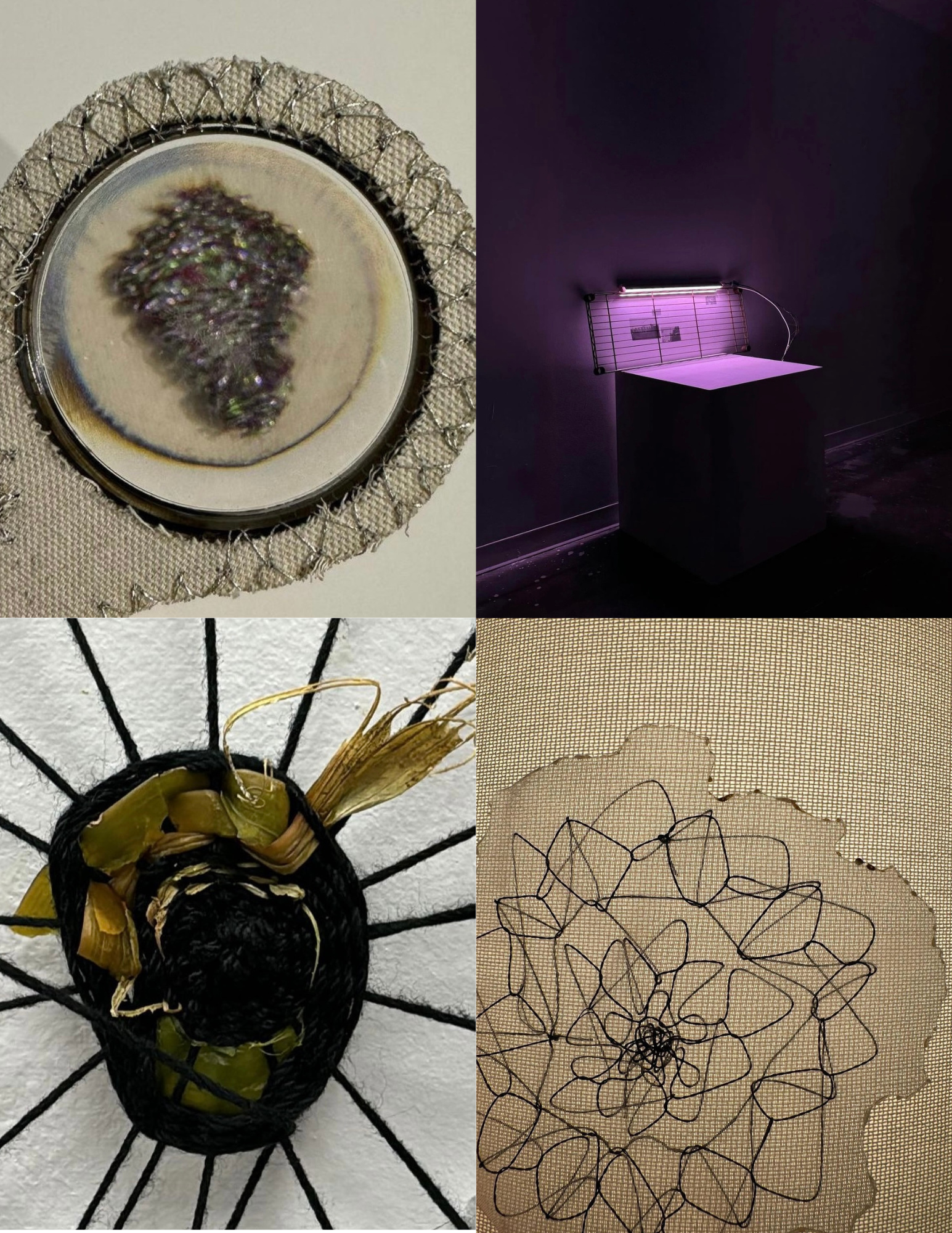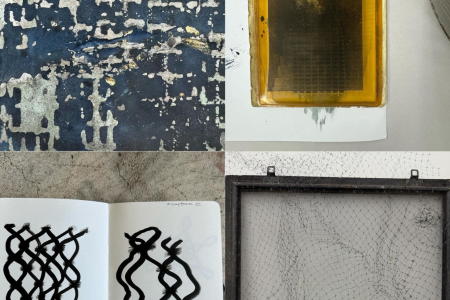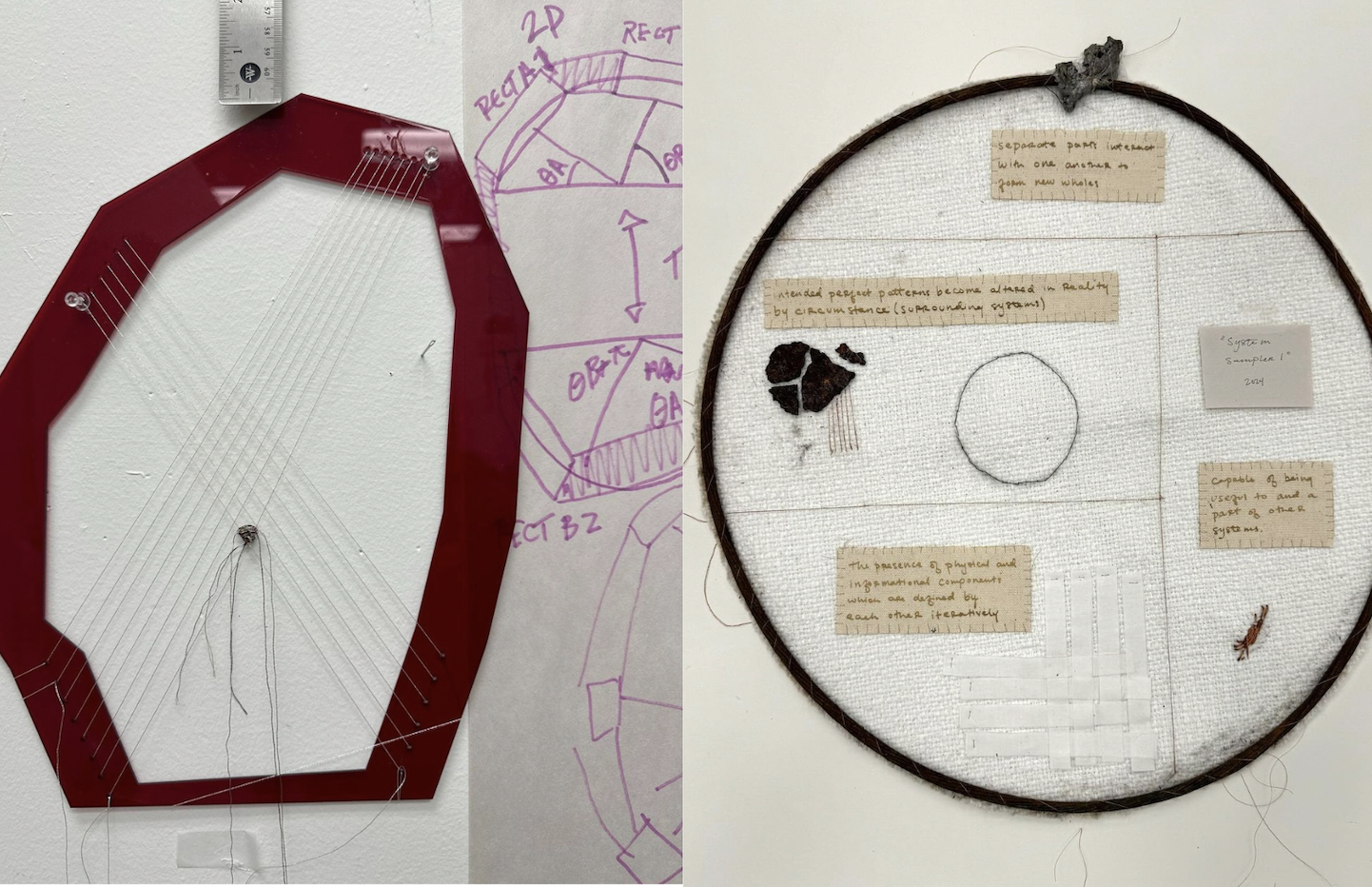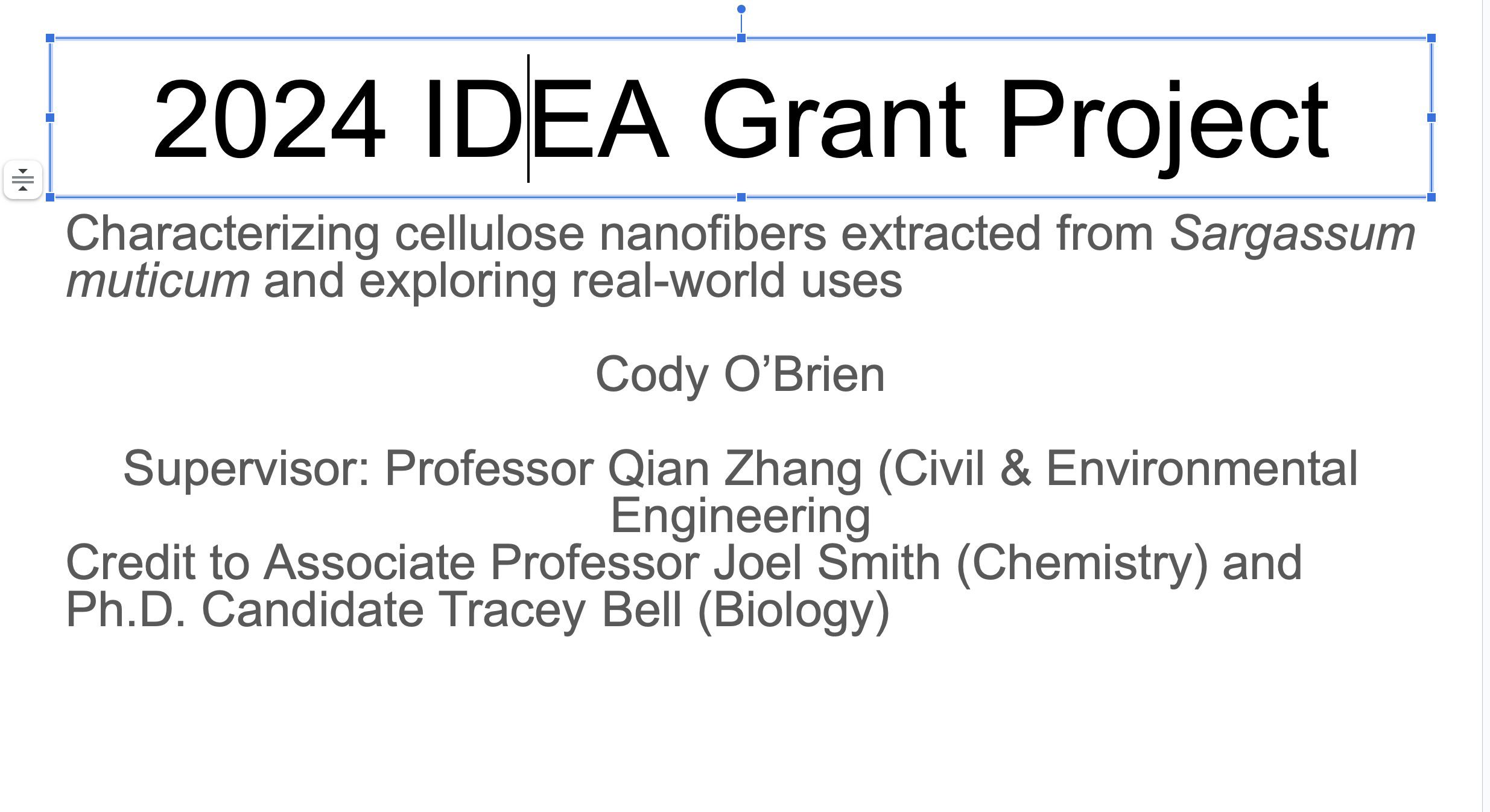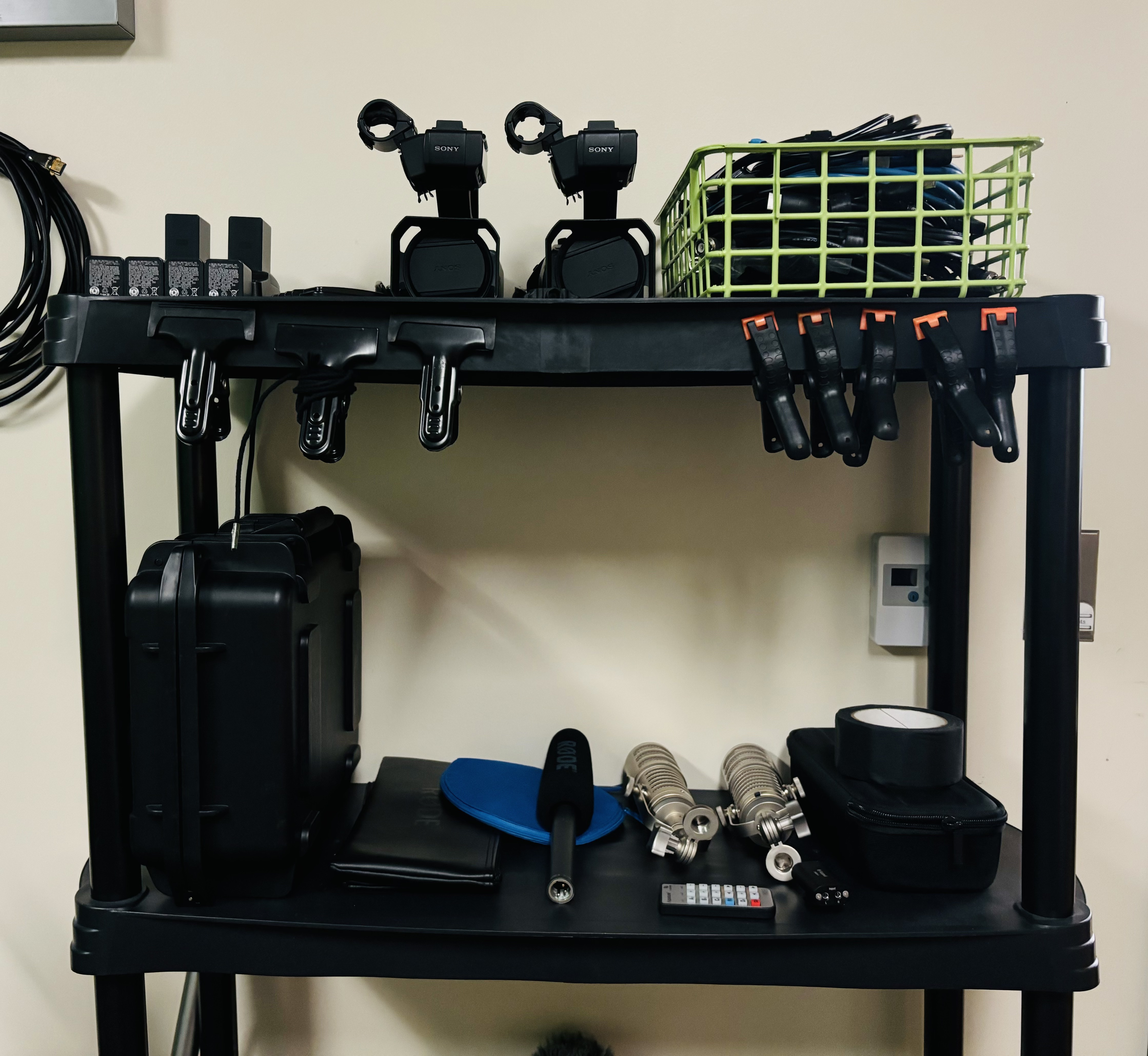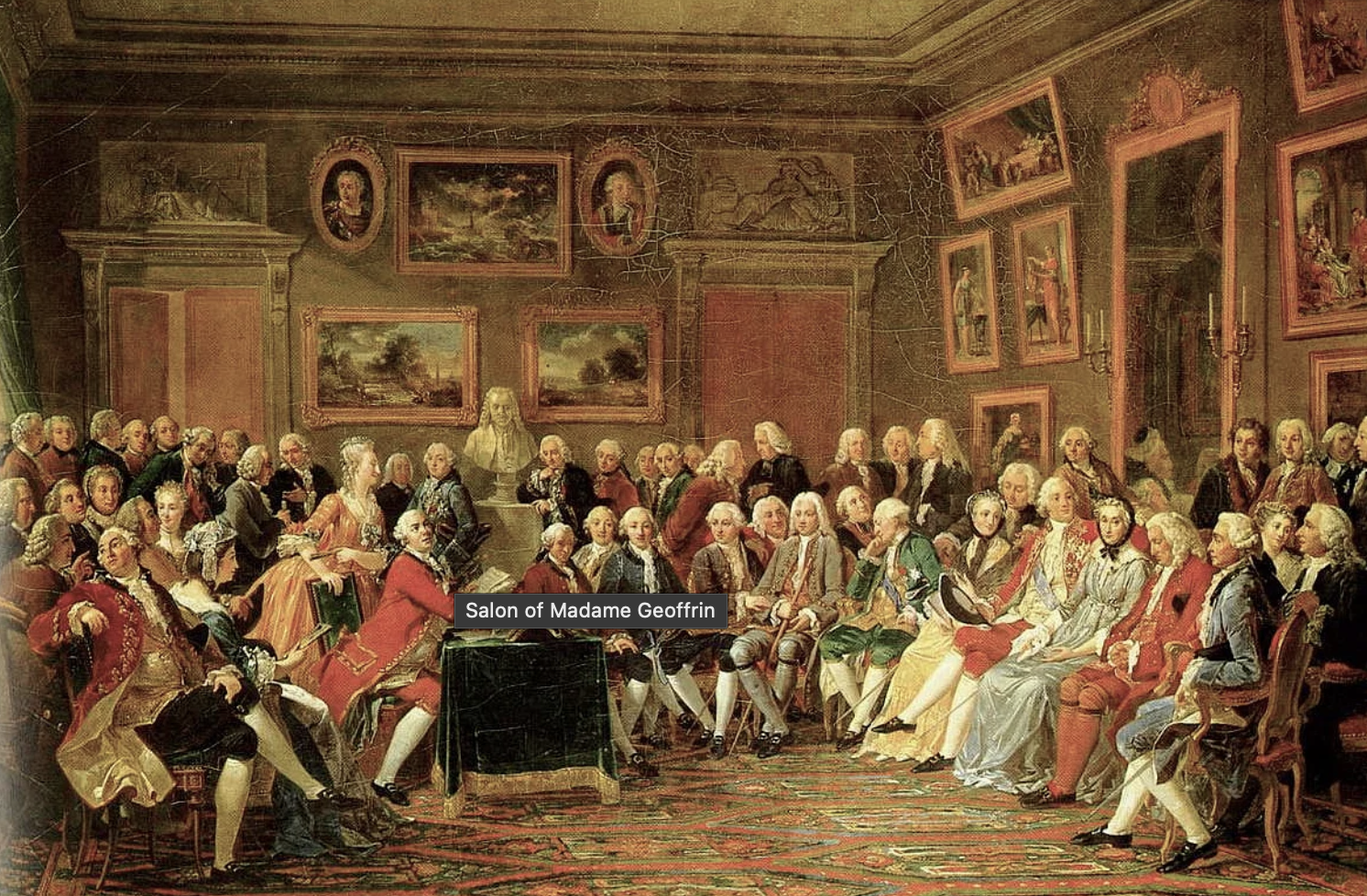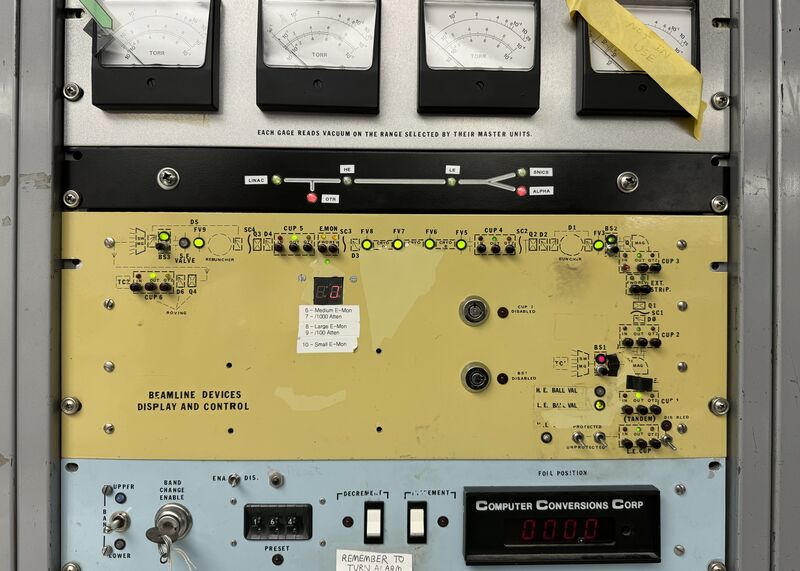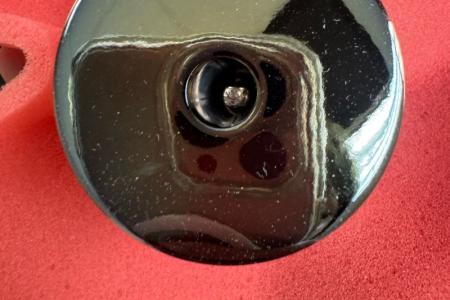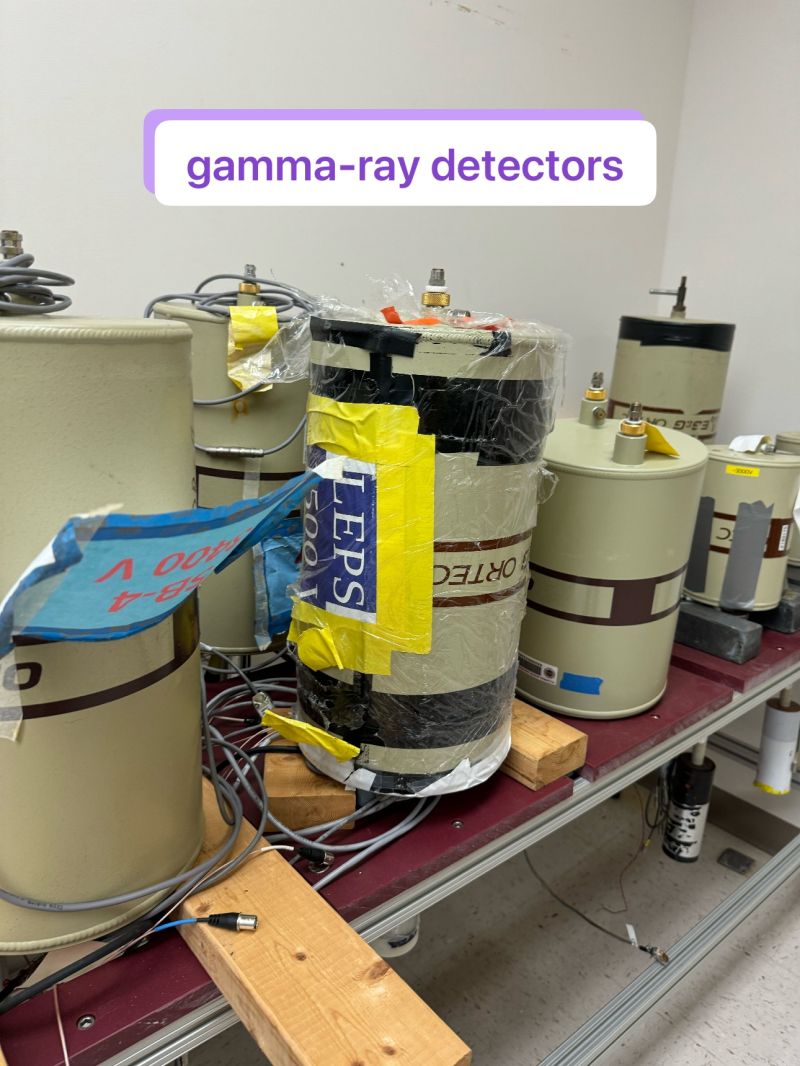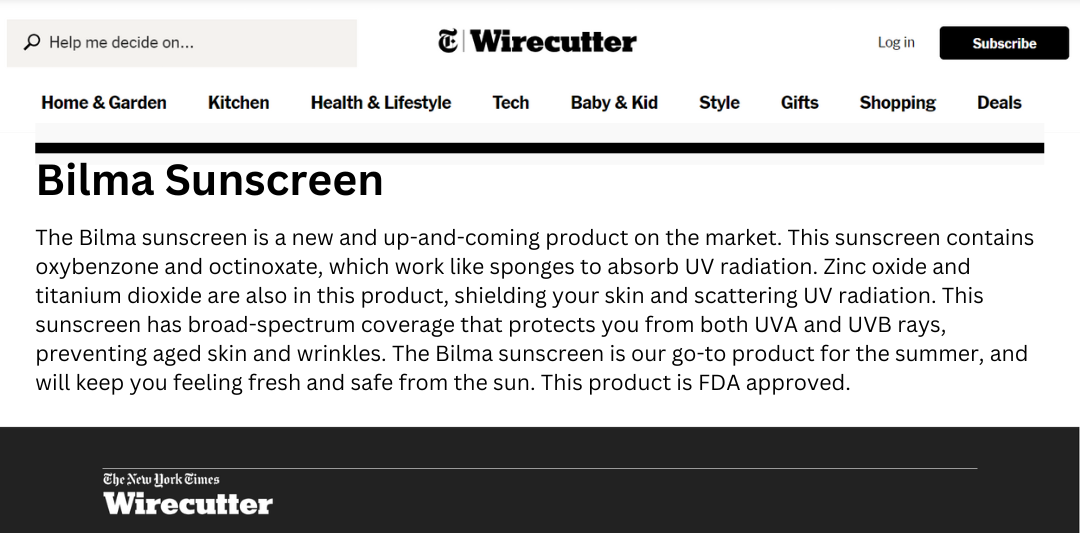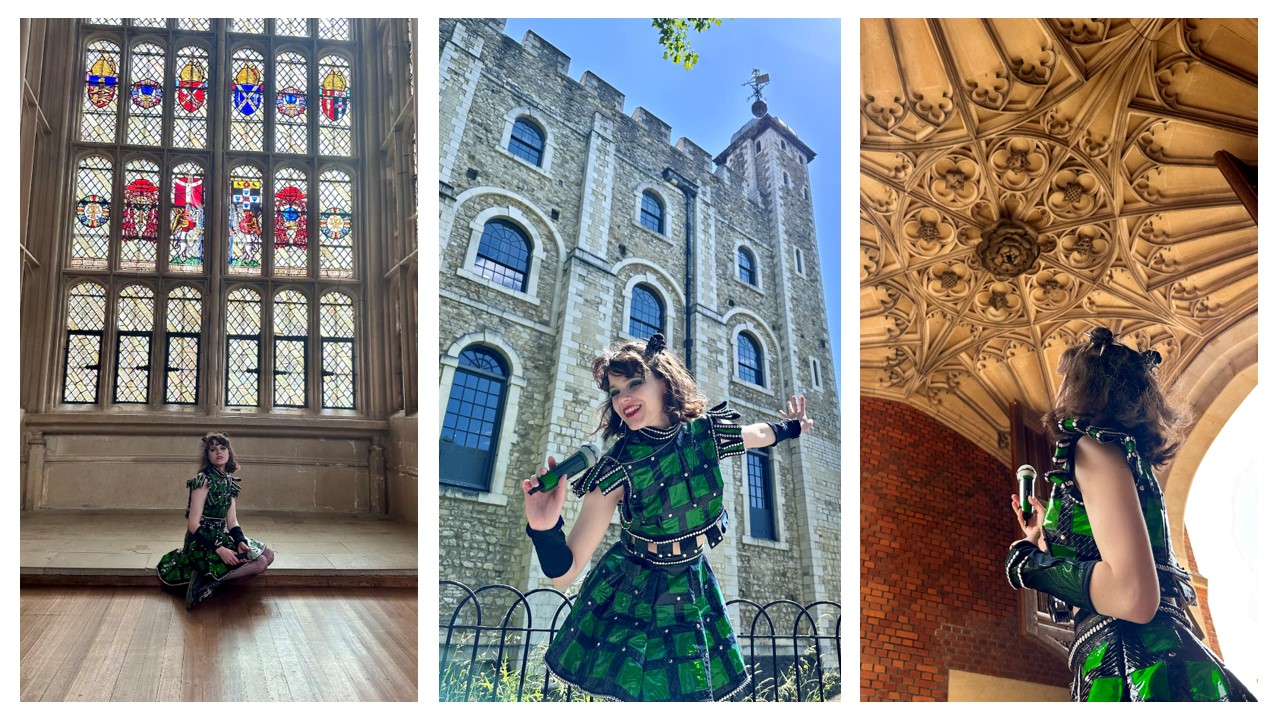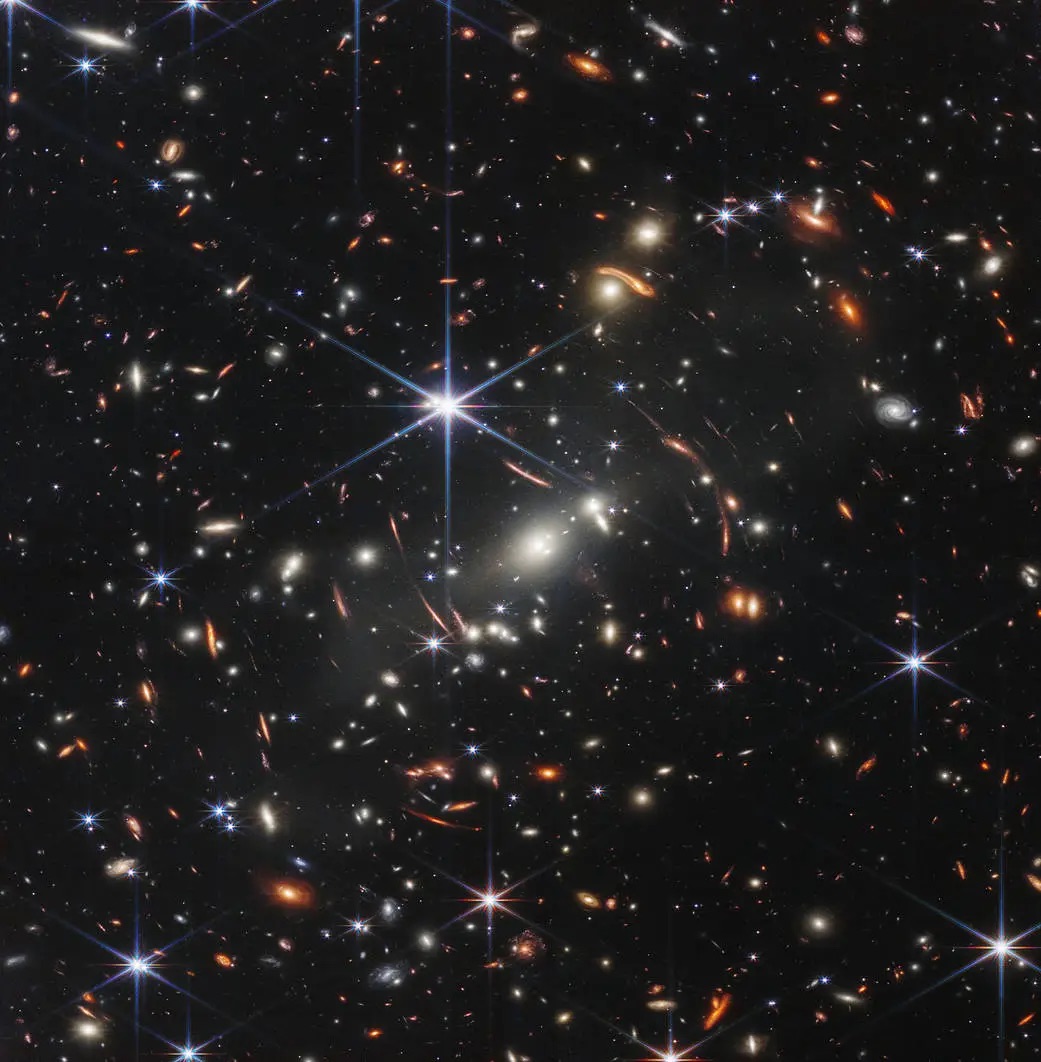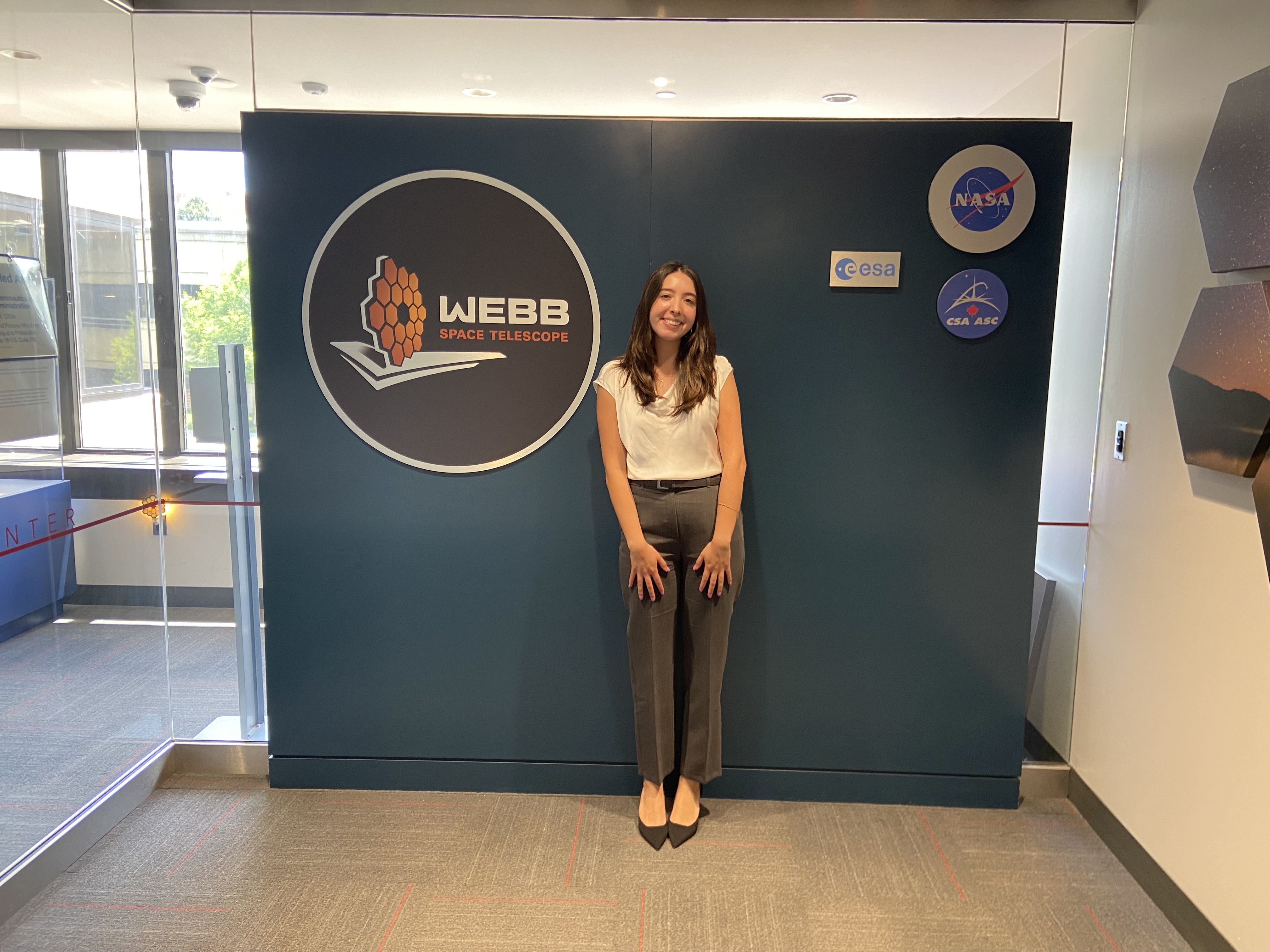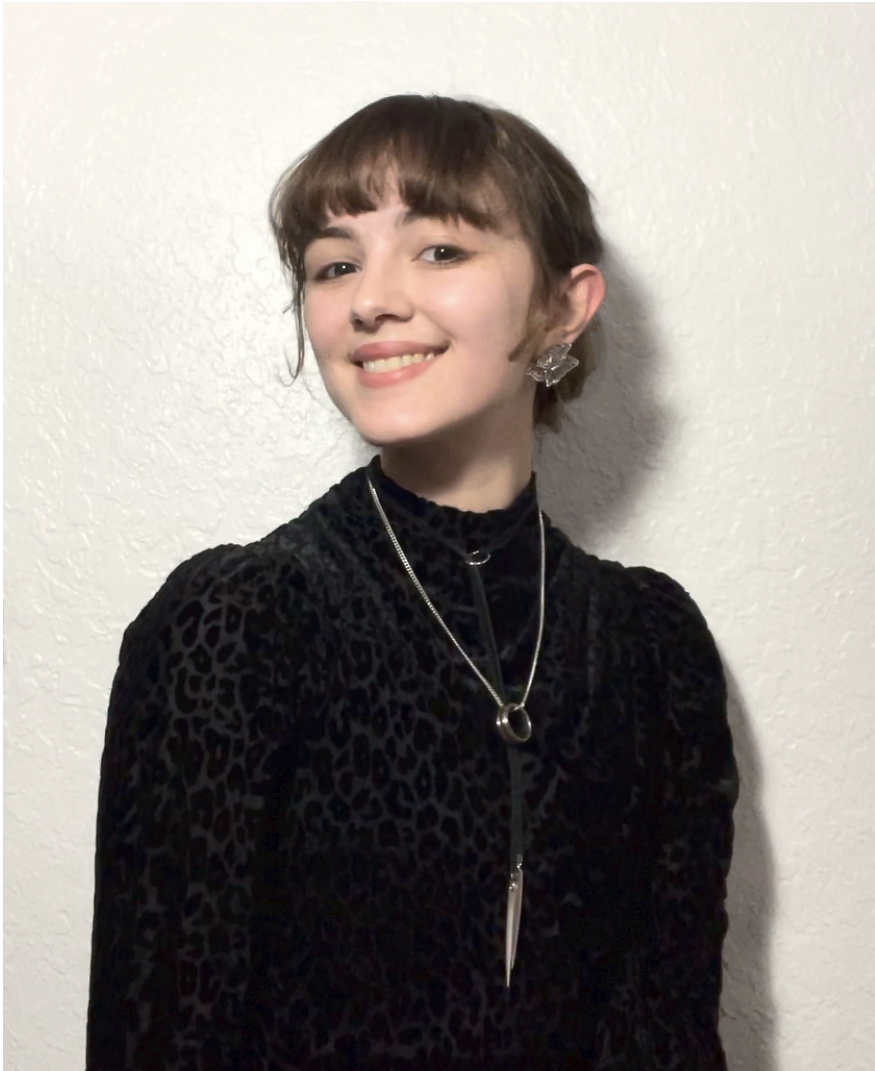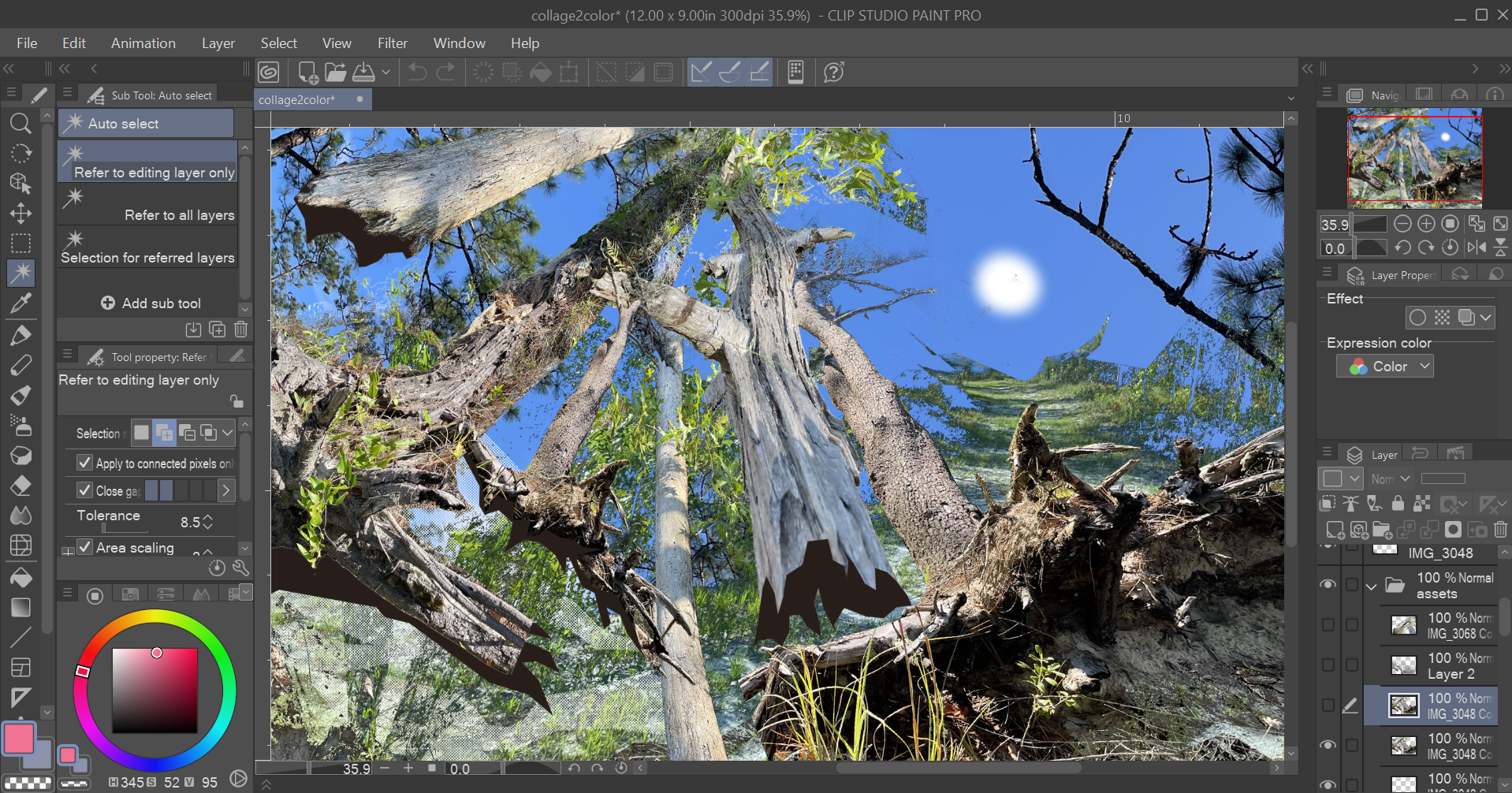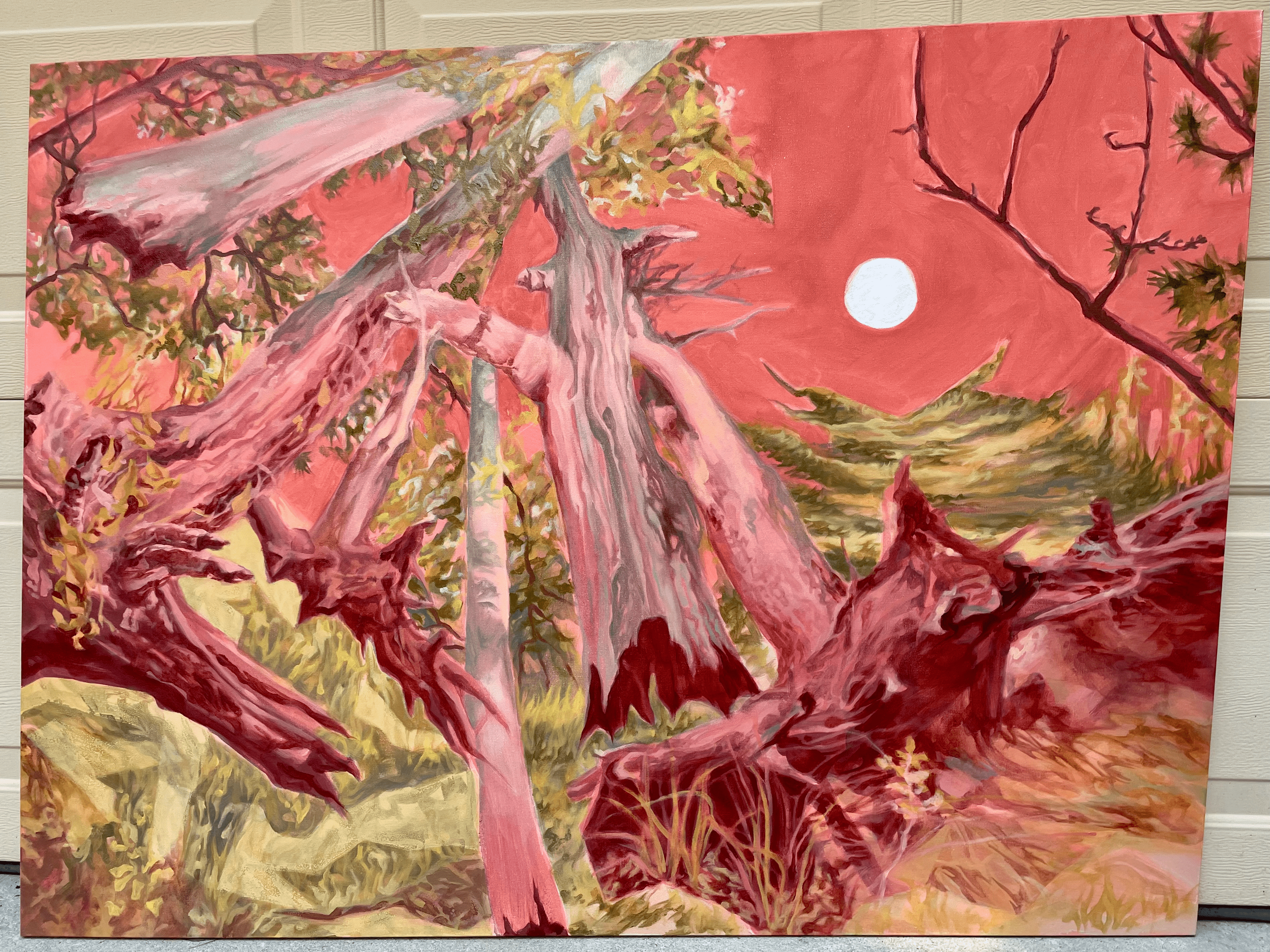President's Showcase
Natalie Lusk
Supervising Professor: Rob Duarte
Natalie is in her third year of pursuing a BFA in studio art and a BA in philosophy with an astrophysics minor. She uses her philosophy and science coursework to inform the content and goals of her art practice, and her career goal is to build a research practice informed by the intersections and disparities of these disciplines. Her output includes writings and artworks, and the material philosophy of her art practice is that any form of matter may be used as an art material. She is currently considering systems theory, logic, architectural/informational structures, and human life.
Abstract
"Findings I" is a collection of small-scale artworks that are the products of my thoughts on metaphysical questions about the persistence of systems. These questions are about the concepts of growth and decay; interaction between separate systems; birth and death; and the apparent dualism of information of matter within all systems. Made of materials like rust, thread, found objects of daily use, and pigment, the resulting artworks are merged instances of universal patterns, human specificity, and chance. A complete digital documentary of the works to be published online is the final stage of the project. This documentary includes images of process, important fragments of text from my writings about the works, and the final works themselves.
Presentation Materials
Project Documents and Links
Cody O'Brien He/him
Supervising Professor: Dr. Qian Zhang
I am a junior Civil/Environmental Engineering student at FSU. After moving to coastal Florida when I was in high school, I was captivated by places like the Guana River Marsh preserve and the Canaveral National Seashore. Surrounded by rapid development, I wanted to direct my future career to help preserve these places, and help Florida grow in a sustainable manner. After enrolling at FSU, I joined the Environmental Service Program and the Surfrider Association and participated in native species restoration, educational outreach, beach cleanups, and other endeavors. After encountering the serious problems imposed by the invasive algae Sargassum Muticum, I became determined to find ways to utilize this otherwise parasitic lifeform.
Abstract
Sargassum muticum is an invasive species of marine algae affecting Florida and other areas along the Atlantic Ocean. The objective of this project is to attempt the first documented extraction of cellulose nanofibers (CNFs) from this species of algae and potentially examine real-world uses of these fibers, such as sustainable concrete reinforcement.
To date, we have refluxed our Sargassum samples through different solutions, with the goal of removing the lipids and proteins and breaking down the remaining cellulose into nanofibers. We followed the steps published in a prior study on extracting CNFs from freshwater algae Cladophora. We encountered many roadblocks and had to refine our methods when we discovered significant oversights and errors in the study, which was not published in a journal specializing in biology or biochemistry.
To further characterize the CNF samples, both for verification of extraction and for comparison to other biological CNFs, we have so far analyzed them under X-ray diffractometry to determine crystallinity. As of writing, we will complete scanning electron microscopy and ATR-FTIR on our samples within the next week.
There are prior academic studies covering the usage of CNFs (from other algae or plants) in standard and pervious concrete reinforcement, thermal insulation, and the development of medicine. If we find that we have successfully isolated CNFs to a certain degree, we may repeat the enhanced extraction process we have detailed from experience and test them in concrete in the fall.
Project Materials
Project Documents and Links
Angelina Dobbs She/Her
Supervising Professor: Dr. Irene Zanini-Cordi
Angelina Dobbs is a junior from Denver, Colorado, majoring in English and Neuroscience. While at FSU, she completed the Women's Leadership Institute and Florida's Sex Trafficking Prevention Program. She also helped to publish a Summer 2024 edition of FSU's magazine, FLOR, when she studied abroad in Florence, Italy, with the Editing, Writing, and Media program. Passionate about research, Angelina joined Dr. Zanini-Cordi's UROP team in the Fall of 2023 to study eighteenth-century Italian women's writings. With her team, Angelina co-authored a peer-reviewed, pedagogical article for Eighteenth-Century Studies slated for publication in the Spring of 2025 and won an IDEA Grant. Using this grant, she researched, wrote, and produced three podcast episodes on the development of science and fashion in Italy. Angelina plans on further developing her research skills in a neuroscience lab, and upon graduation in 2026, she intends to become a developmental editor or pursue a Ph.D. in neuroscience.
Abstract
A grand tour into the intricate networks of 18th-century sociability reveals the social connections that shaped the modern intellectual and cultural fabric of European society.
This IDEA Grant project expands our UROP research and podcast experience, which focused on how Italian Salonnières contributed to the Enlightenment. By developing the podcast series Sip and Connect: Social Networking Italian Style, we examine cultural components that shaped Italian Sociability during the eighteenth century and consider how they embodied Enlightenment Ideas. Our episodes explore the origins and growth of these innovative technological and cultural developments facilitated by social connections. We discuss topics like coffee culture, journalism, politics, early science, religion, fashion, social etiquette, art, and opera.
We researched these themes, interviewed experts, and drafted and edited scripts, culminating in our production of twelve podcasts over the summer. This series will be an integral part of an undergraduate course on 18th-century Italian Enlightenment and Sociability. In addition to our primary goal of helping students explore Enlightenment culture, we learned how to engage a broad public in scholarly topics in a conversational way and to utilize modern media to disseminate knowledge.
Our peer-reviewed article "Conversations That Shape Identity," slated for publication in Eighteenth-Century Studies, reflects on the overall meaning of our pedagogical experience and these learning outcomes, concluding with the IDEA Grant. By considering the efforts of women artists, writers, and scientists in our research, our contribution aims to reshape the androcentric conversation on Italy's cultural and scientific development during the Enlightenment.
Presentation Materials
Project Documents and Links
Ana Pereira they/them
Supervising Professor: Vandana Tripathi
Ana Pereira, a Brazilian-American from Miami, FL, is a senior majoring in physics. Actively engaged on campus, Ana contributes as an FGLSAMP member, UROP Leader, and ACE Tutor. With aspirations of earning a PhD in experimental nuclear physics, Ana aims to become a physics professor, dedicated to nurturing a collaborative research community and advancing our understanding of physical phenomena.
Abstract
About 3000 isotopes can be found in the chart of nuclides, but only approximately 300 are stable. The remaining isotopes may decay to a more stable nucleus via alpha decay, beta decay, or fission for the very heavy ones. Both stable and unstable nuclei can be excited to characteristic energetic states. These states can be described by their energy and angular momentum: properties which provide insight into the behavior of the strong nuclear force. An excited nucleus may de-excite to the ground state by emitting gamma rays. Gamma rays carry energy and angular momentum: information which can be translated to insight into nuclear structure. At the John D. Fox Laboratory, a team of nuclear physicists maintain a dedicated effort towards discovering and characterizing nuclei using various experimental techniques: including gamma-ray spectroscopy. In a reaction between projectile oxygen-18 nuclei kept at 55 MeV and target titanium-50, excited copper-65 is produced in about 8% abundance. The target chamber—where the reaction occurs—is surrounded by an array of 9 high purity germanium (HPGe) detectors at varied angles. The goal of this project is to discover new and verify the energy and angular momentum assignments to the excited states of copper-65. Preliminary results do not show evidence of any new excited states, but verification of angular momentum in existing states is possible using ratio analysis between the relative intensity of a gamma ray at different detector angles.
Presentation Materials
Project Documents and Links
Alyssa Croft
Supervising Professor: Patrick Merle
Alyssa Croft is a fourth-year Public Relations major admitted in the BA/MA pathway program at the School of Communication. She joined a research group in Fall 2023 with Dr. Nicole Lee from Arizona State University and Dr. Patrick Merle, her school director. She was involved in a project presented at the International Public Relations Research Conference in Orlando in March 2024. Alyssa is currently an Honors in the Major student and has used her funding from the IDEA Grant to conduct an experiment examining misleading claims that employs scientific terminology. After the conclusion of the IDEA Grant program, she plans to continue working on her project until her presentation before her committee. Alyssa will graduate with a bachelor’s degree in spring 2025, and a master’s degree in the spring of 2026. In the future, she hopes to use her communication and research skills to help companies involved in environmental preservation.
Abstract
Scienceploitation has been defined as the misleading use of scientific language to present unsubstantiated claims to promote products. A plethora of industries such as beauty care, supplements, and at times specialized health procedures such as stem cell therapy continuously use this messaging tactic to market their products.
This study contributes to the existing literature that has shown how scientific jargon can increase consumers’ trust and therefore affect their purchasing intentions. The proposed work specifically addresses a gap in the scholarship and test cross-cultural differences over two studies through an examination of the effect of language on trust and purchasing behavior. This work is particularly valuable as it will help understand the extent to which minorities may be more vulnerable to misleading scientific claims. It also examines the purchasing behaviors consumers have depending on lower or higher credibility sources.
Study 1 determined the stimuli for study 2’s experiment, where participants were exposed to handwarmers, rain jackets, sunscreen, sunglasses, and water filters. In this within-subject design, the intent was to determine which products yield the strongest influence on participants. In study 2, the two most influential products from study 1 will be selected and presented to participants. Study 1 has laid out the groundwork for study 2, which will consist of a 2(presence or absence of scientific jargon) by 2(low and high credibility source) between-subjects experiment comparing purchasing behavior responses of Hispanic bilinguals and monolinguals.
Presentation Materials
Project Documents and Links
Emma Bryson She/Her
Supervising Professor: Prof. Carrie Ann Baade
Emma (Emmie) Bryson is a senior Bachelor of Fine Arts student focusing on painting and drawing, and an Art History minor. Intrigued by the abject feminine, gendered craft, and dichotomy of extraordinary amongst mundanity, her multimedia artwork explores how the metamorphosis and adoption of characterization act as a vehicle for empowerment and self-discovery. Emmie is an Undergraduate Honors Thesis candidate examining how contemporary theatre and performance quantify the expression and perception of feminine rage. She is also a recipient of the Ann Kirn Scholarship and vice president of FSU’s Art Students League. After her expected graduation in the Spring of 2025, she hopes to earn an MFA and apply for art exhibitions around the country.
Abstract
Feminine rage is a concept that exceeds mere emotion and is defined by an air of divinity. It is neither apologetic nor demure, it is a response and sense of being achieved by fury in the vacuum of agency and joy. A subversion to the cultural canon that aggression is masculine. The volatile and unpredictable nature of live theatre, entwined with the dynamics of storytelling through the creation of personas makes performance an ideal medium for expressing anger. From contemporary musicals about Tudor pop divas to the iconic plays of Shakespeare, the presentation of “difficult women” and their sense of identity echoed through garments offer the participant and viewer an opportunity of empowerment to express rage unfettered by gendered expectations. Informed by research in the National Theatre Archives, discussions with actresses, and attending live productions on the West End, characters who embodied feminine rage became the basis for constructing pieces of wearable art donned in site-specific performances of self-liberation. Holographic vinyl fabric, hundreds of beads and metal rivets, and an absurd amount of thread, among other things, facilitated experimentation with mediums like sewing, embroidery, jewelry-making, fabric dyeing, and leathercraft. Beginning with work referencing iconic costumes that followed a progression into original designs, the addition of detailed accessories and motifs pays homage to each narrative and adds a sense of personalization. This series of wearables explores how the female sense of self and the need to express aggression can find power in the inspiration and embodiment of theatrical figures.
Presentation Materials
Project Documents and Links
Montserrat Zeron she/her
Supervising Professor: Dr. Ronald E. Doel
Montserrat Zeron is a fourth-year student majoring in International Affairs with a minor in History. She was part of the First Year Abroad Program as well as the Global Scholars Program, and is currently a member of the Social Science Scholars cohort. She works in the Global Media division of University Communications and serves on the executive board for TEDxFSU. Inspired by the intersection of space science and global affairs, Montse merged those interests through her IDEA Grant project and Honors in the Major Thesis in Space Diplomacy. Her research interests include the role of diplomatic mechanisms on the development of outer space missions, space policy, and international law. For her project, Montse conducted a set of 7 oral history interviews with astronomers in the U.S., and Europe involved in multi-national projects; final transcripts of her interviews will reside at the Center for History of Physics / Niels Bohr Library of the American Institute of Physics (College Park, MD). After graduation, she plans to attend graduate school and work in the space policy field.
Abstract
Amid a booming space economy, changing science policy, and an increasing number of countries with launch capabilities, space diplomacy has emerged as a crucial topic in international relations. This project explores space diplomacy and international collaboration through the lens of extremely complex scientific missions and the way they are realized in practice. Through a case study of the James Webb Space Telescope (JWST), this study analyzes distinct components that enabled cooperation between key stakeholders: the National Aeronautics and Space Administration (NASA), the European Space Agency (ESA), the Canadian Space Agency (CSA), participating governments, private industry, the scientific community, and the public. This telescope—just launched in late 2021—allows for innovative approaches to understanding contemporary space policy: key insights were gained through multiple oral history interviews with senior scientists who shaped the Webb Telescope, greatly expanding (limited) published records and available archival materials. Among the main questions addressed by this project: What does it take to develop and give coherence to multi-state ‘Big Science’ programs in space? What was the impact of diplomacy and international partnerships on the planning, development, and current operation of JWST? International law and transnational agreements, funding mechanisms, technological developments, and public opinion: all are analyzed here. Lastly, the project speculates about the future of international cooperation in space science missions given the current economic and political outlooks.
Presentation Materials


